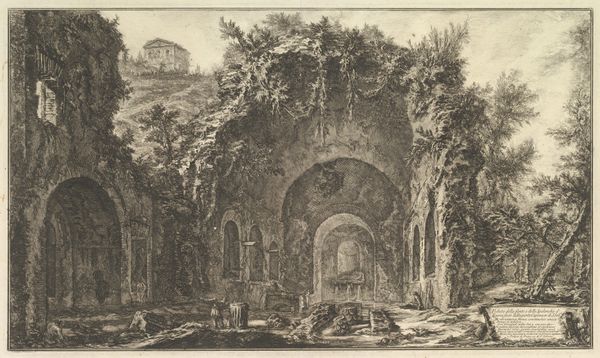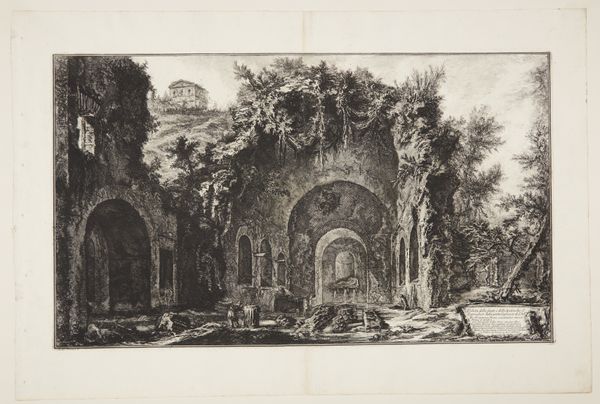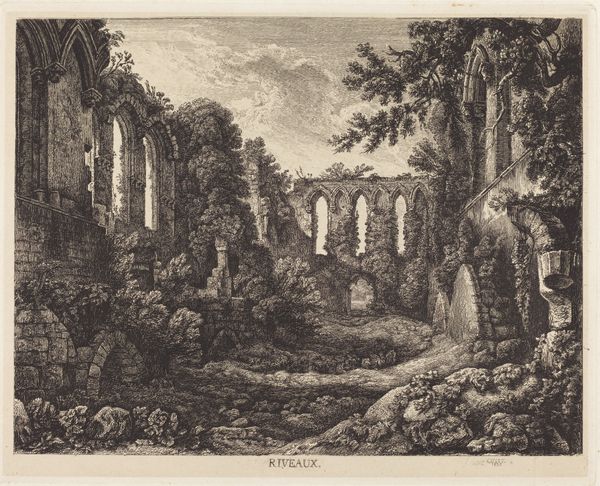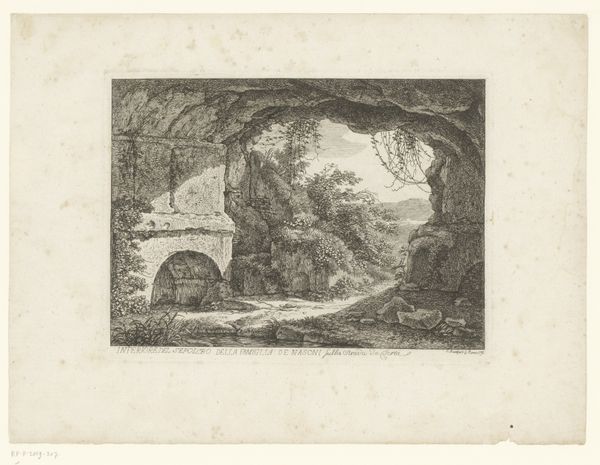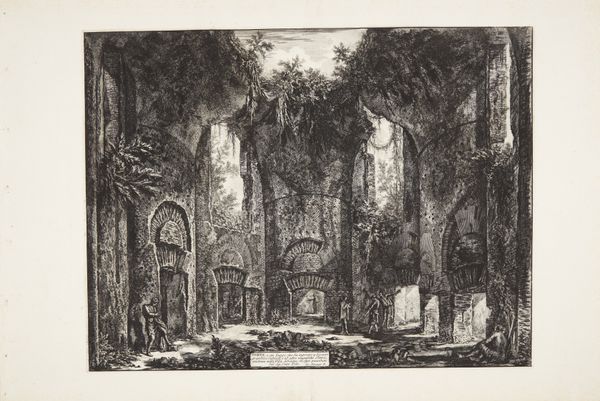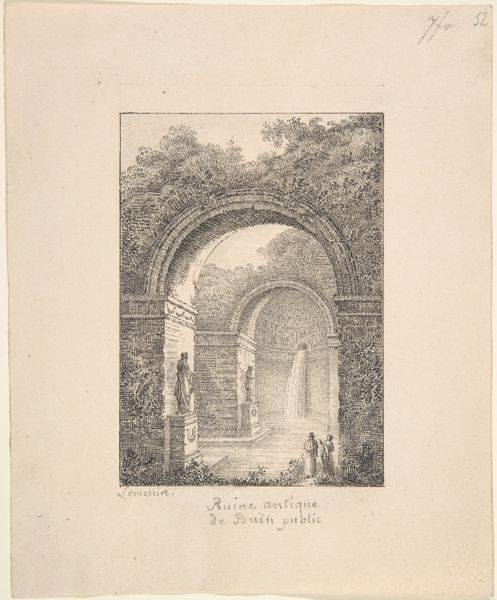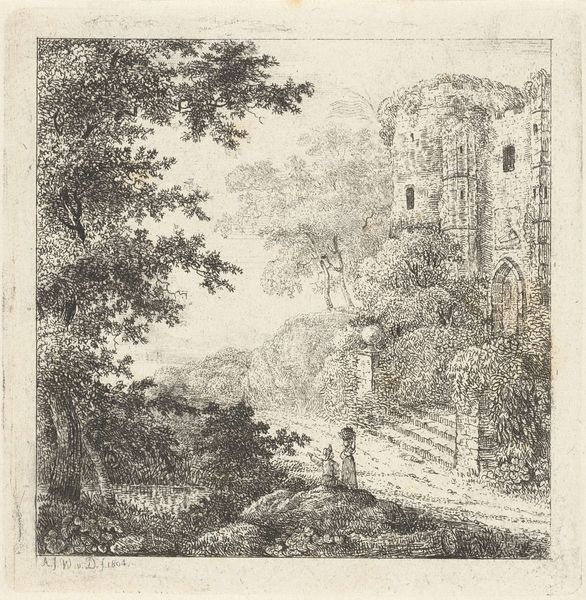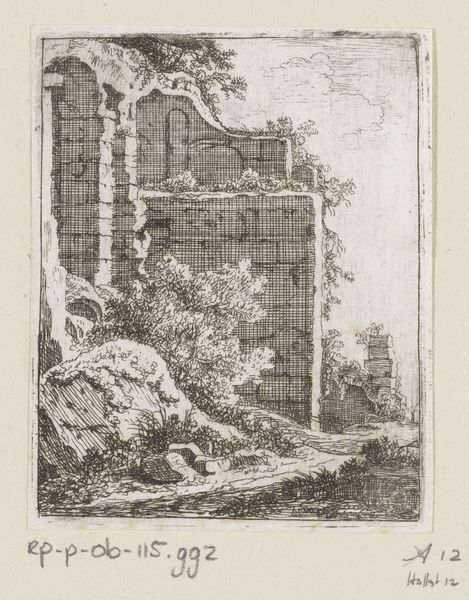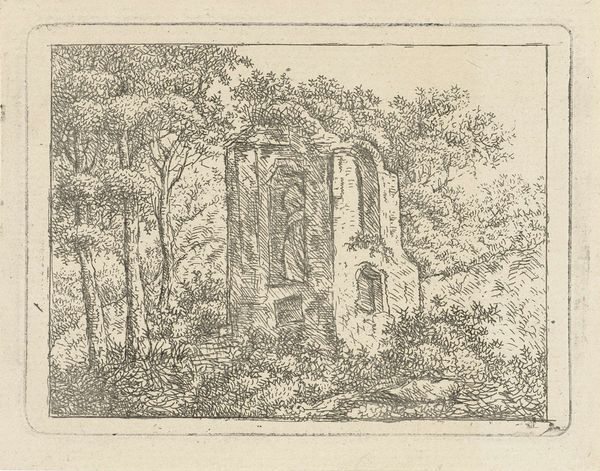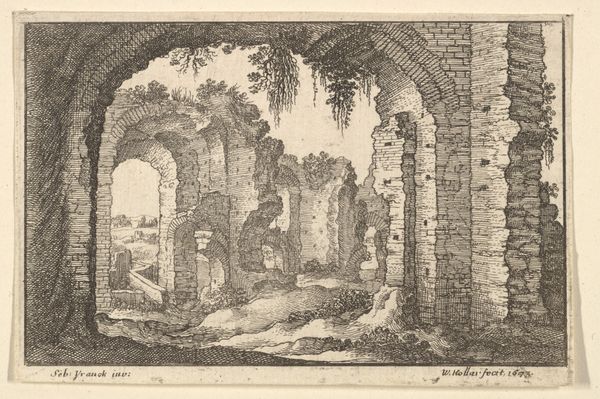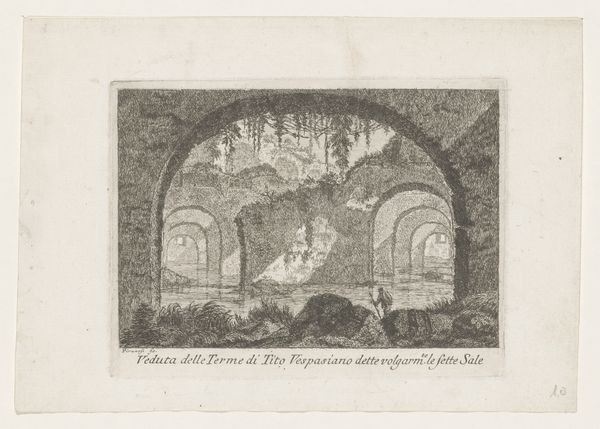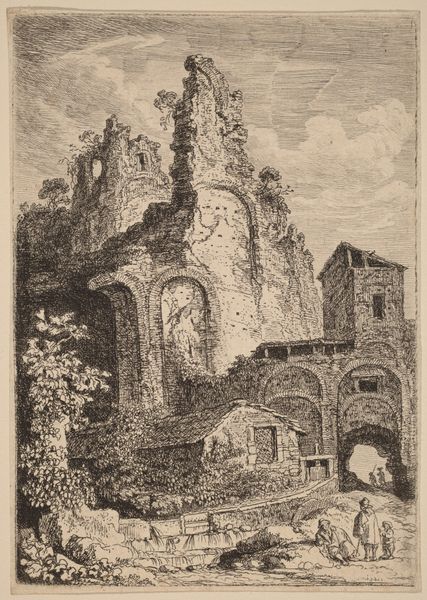
print, etching
# print
#
etching
#
landscape
#
romanticism
#
line
#
history-painting
Copyright: National Gallery of Art: CC0 1.0
Curator: This etching, created by George Cuitt the Younger in 1810, is entitled "Saxon Arch". Editor: It has this marvelous air of ruined majesty. Almost overgrown, it makes you wonder what happened to that place. I find it beautifully somber and nostalgic. Curator: Nostalgia for the medieval past was all the rage when this was made. Cuitt, like many artists of his time, found inspiration in the ruins of abbeys and castles, framing them within a Romantic aesthetic. Editor: Look how the artist contrasts the arch, a man-made structure, with the organic, untamed nature growing around it. It makes you reflect on the impermanence of things, doesn't it? Even mighty empires crumble into the earth. I also see how precise he's being. Notice the detailed texture of the stones, and the wild foliage, and then how delicate and light the shading seems overall. Curator: His lines, despite being so detailed, definitely capture that aesthetic movement's sentiment of the sublime. The image certainly evokes a sense of awe, coupled with a melancholy awareness of time's passage. Cuitt likely made other similar etchings, finding a niche market for picturesque views of historic sites. Editor: This is so cool – there's also that subtle message about art's endurance. It outlasts stone. How perfect is that? You look through this stone arch to yet another architectural fragment further into the background. A fragment behind a fragment, observed with layers of foliage... there are multiple ways to observe this piece. Curator: Indeed. While we appreciate Cuitt’s ability to render a scene, we should also remember that the picturesque aesthetic was bound up with specific social and economic forces – including the growth of tourism and the commodification of historical narratives. So this artwork serves multiple functions. It’s aesthetic, historical, and I daresay political as well. Editor: What a fascinating journey into ruins and reflections! This is way deeper than a quick glance allows; the Saxon Arch becomes more than a mere depiction – it turns into a meditation on history, time, and the enduring power of art itself. Thank you!
Comments
No comments
Be the first to comment and join the conversation on the ultimate creative platform.

